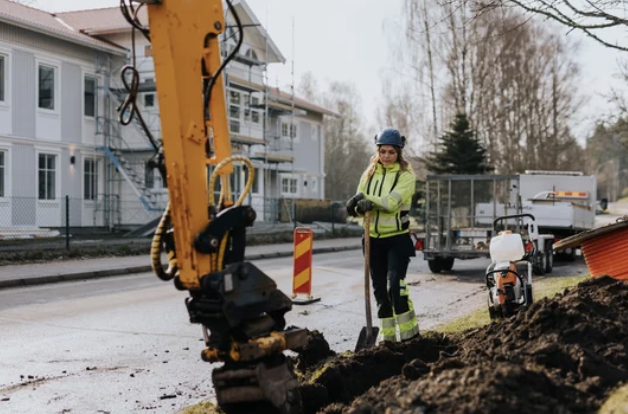Introduction
Digging and excavation are crucial activities in construction, infrastructure development, and utility maintenance. However, one common problem that often arises during these processes is third-party damage. This occurs when underground utilities or property belonging to someone other than the excavator are accidentally damaged. In this article, we’ll explore the reasons behind third-party damage, discuss ways to prevent it, and emphasize the importance of safe excavation practices.
Why Does Third-Party Damage Happen?
1. Incomplete Utility Mapping:
One of the primary reasons for third-party damage is inadequate or inaccurate utility mapping. Underground utilities like gas pipelines, water lines, and electrical cables can be located at different depths and positions. If the excavator relies on outdated or incomplete maps, they are at risk of damaging these essential services.
2. Lack of Communication:
Poor communication between various stakeholders is another leading cause of third-party damage. Often, excavation projects involve multiple parties, including contractors, utility companies, and property owners. Failure to communicate effectively and share information about the location of underground assets can result in accidents.
3. Equipment Failure or Inexperience:
Inexperienced operators or equipment failure can lead to unintentional damage. Excavation equipment requires skilled handling to avoid mishaps. Inadequate training and equipment maintenance can significantly increase the risk of third-party damage.
4. Rushed Work:
Tight project schedules and deadlines can compel excavators to rush their work. This haste can lead to a lack of attention to detail and safety protocols, increasing the likelihood of accidents.
5. Neglecting Safety Measures:
Failing to adhere to safety measures, such as using proper signage, barricades, and safety gear, can result in third-party damage. A lack of safety precautions endangers not only the excavators but also bystanders and adjacent properties.
Preventing Third-Party Damage:

1. Comprehensive Utility Mapping:
Ensure accurate and up-to-date utility maps before excavation begins. In addition, collaborate with utility companies and use ground-penetrating radar (GPR) or other advanced technologies to precisely locate underground assets.
2. Improved Communication:
Maintain open and clear lines of communication with all stakeholders involved in the excavation project. Regularly update them on progress and any changes to the project plan.
3. Proper Training and Equipment:
Invest in comprehensive training programs for equipment operators. Moreover, regularly inspect and maintain excavation machinery to reduce the risk of equipment-related accidents.
4. Adherence to Safety Regulations:
Strictly adhere to safety regulations and guidelines, including the use of appropriate signage, fencing, and personal protective equipment. Make safety a top priority on every excavation site.
5. Planning and Precaution:
Develop a detailed excavation plan that considers the specific site conditions, potential hazards, and emergency response procedures. Take precautions such as potholing (exposing utilities with vacuum excavation) before digging near known utilities.
A helpful article on Safety Practices and Precautions is found here.
Conclusion:
Third-party damage during digging and excavation can result in costly repairs, legal issues, and even endanger lives. However, with careful planning, improved communication, and strict adherence to safety measures, such incidents can be significantly reduced or entirely prevented. Lastly, it is the responsibility of all stakeholders involved in excavation projects to prioritize safety and minimize the risk of third-party damage. By doing so, we can ensure safer and more efficient excavation processes, benefiting everyone involved.
Read more on how Phoenix Loss Control can help if damage occur here.

